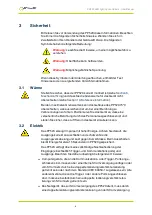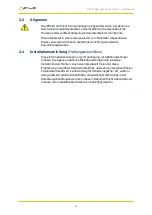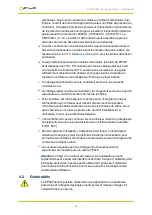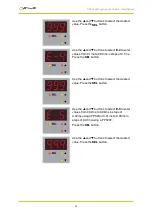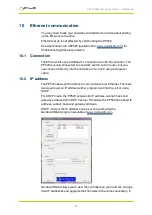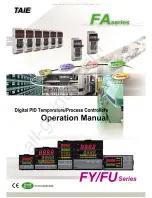
PP520 LED lighting controllers - User Manual
7.2
Total heat output
The total heat output from the PP520 is given by adding the heat output
for both channels as calculated above.
There are several ways to reduce the heat output from the PP520:
Use pulse mode. If the output is only on when you need it, you can sig-
nificantly reduce the heat output. Feed the camera trigger into the PP520
and pulse the lights.
Turn the light of when not needed. If you do not have precise timing of
when the camera will trigger, you can use switched mode to switch the
output off or on depending on the trigger input (or use the PP520 Ethernet
commands to turn the output on and off).
Reduce the output current if possible.
Reduce the supply voltage. Most PSUs have some adjustment in their out-
put voltage.
Connect lights in series instead of parallel. If you have an array of lights or
LEDs in parallel, then changing the arrangement to serial will increase the
voltage across them but reduce the overall current.
Use two PP520s and use one channel from each. For high power applic-
ations, this may be the easiest solution. Even with one light, it is possible to
parallel up two output channels from different PP520s.
Use a higher power controller from the Gardasoft range, for example a
PP820 can dissipate much more heat.
With no heatsinking and no airflow, the PP520 can dissipate the following:
8W at 25°C ambient
4W at 40°C ambient
If the heat output is no greater than 8W, no heatsinking is required. If the
heat output is between 8W and 24W, the PP520 needs to be mounted on
a solid piece of metal to dissipate the heat. Above 24W, it is necessary to
have a large heatsink with fan cooling.
—
20
—



